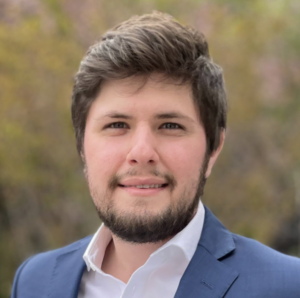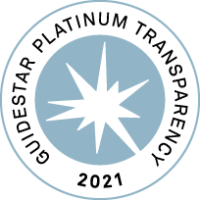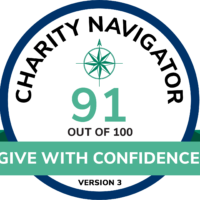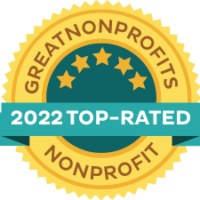 In 2020, The Neuromuscular Disease Foundation made history when it announced an ambitious plan to achieve the IND (Investigational New Drug) approval stage of its work toward a treatment to end GNE Myopathy. GNE Myopathy (GNEM) is a rare genetic disease that progressively damages the body’s muscle tissue. For more than a decade, NDF has been the single largest funder of critical research in service of GNEM patients worldwide. To reach its goal of delivering a therapeutic that will effectively halt the progression of GNEM, the NDF tapped a veritable who’s-who of the global research community. Among its foremost advisers is Richard Horgan, Founder and CEO of Cure Rare Disease. Rich is a leading translational consultant, who’s been featured in Business Insider as one of ‘30 leaders under 40 transforming healthcare in 2020’ and on Forbes’ 2021 30 under 30 list. His strong interest in accelerating promising treatments for rare diseases drove him to form an interdisciplinary collaboration of world-class researchers and clinicians, to pioneer the rapid development of advance therapeutics for rare, genetic diseases. Recently, Cure Rare Disease announced that it has obtained FDA approval to administer the first in-human CRISPR therapeutic for a mutation of Duchenne muscular dystrophy. These are the results that the NDF hopes to see soon. We took a moment to speak with Rich about NDF’s progress and how he hopes his experience will lead to similar success in developing a treatment for GNEM.
In 2020, The Neuromuscular Disease Foundation made history when it announced an ambitious plan to achieve the IND (Investigational New Drug) approval stage of its work toward a treatment to end GNE Myopathy. GNE Myopathy (GNEM) is a rare genetic disease that progressively damages the body’s muscle tissue. For more than a decade, NDF has been the single largest funder of critical research in service of GNEM patients worldwide. To reach its goal of delivering a therapeutic that will effectively halt the progression of GNEM, the NDF tapped a veritable who’s-who of the global research community. Among its foremost advisers is Richard Horgan, Founder and CEO of Cure Rare Disease. Rich is a leading translational consultant, who’s been featured in Business Insider as one of ‘30 leaders under 40 transforming healthcare in 2020’ and on Forbes’ 2021 30 under 30 list. His strong interest in accelerating promising treatments for rare diseases drove him to form an interdisciplinary collaboration of world-class researchers and clinicians, to pioneer the rapid development of advance therapeutics for rare, genetic diseases. Recently, Cure Rare Disease announced that it has obtained FDA approval to administer the first in-human CRISPR therapeutic for a mutation of Duchenne muscular dystrophy. These are the results that the NDF hopes to see soon. We took a moment to speak with Rich about NDF’s progress and how he hopes his experience will lead to similar success in developing a treatment for GNEM.
Given Horgan’s success via Cure Rare Disease, a nonprofit he was inspired to found in connection to his younger brother’s Duchenne muscular dystrophy, one wonders at his drive to seek out a secondary path to serve patients of a different condition, as he has done by joining the NDF science team. But in speaking with Horgan, it becomes clear that for him, this was an opportunity to put a promising framework to use for the benefit of muscular disease patients. “Cure Rare Disease is focused on treating patients impacted by rare neuromuscular diseases — rare and ultra-rare neuromuscular and neurodegenerative diseases. The opportunity to consult for NDF gave a unique opportunity to be able to take the model that we built at Cure Rare Disease, and expand it to another disease through NDF. Working with some familiar collaborators and colleagues like Dr. Lek and Dr. Weisleder, it was not only a good team, but it was also a great opportunity to try to help another part of the population that’s been neglected,” he says. “With the advent of gene therapy, the ability to develop these therapies and replace the whole gene for amenable diseases was a very intriguing prospect to me”.
As he facilitates the NDF science team maintaining diligent progress toward a pre-IND package, the question on everyone’s mind has been one of timing, and related risk- assessment. With so much momentum in the right direction, what are the possible pitfalls the team must avoid to stay on course, and to move full speed ahead?
Horgan explains with a scientific observation of detail, that any drug development effort is holistically challenging, citing the process he experienced garnering FDA approval at Cure Rare Disease. “Being that Cure Rare Disease’s therapeutic is a first in human genome editing technology, we needed to be attentive to the question of ‘what are the unknown unknowns that we need to make sure we solve for manufacturing?’ That is one of the perennial challenges for gene therapies: can we make enough of the material in sufficient quantity and quality, to be able to treat the intended person or human population?” The team needed to look at what would satisfy the FDA; to make sure that the therapeutic candidate had a good opportunity to introduce efficacy, as well as being safe. After reaching the pre-IND stage, they also needed to pave the way for manufacturing. “Collaborating early and often with the FDA was really key to that,” Horgan recalls, “because we were able to understand their perspective and to integrate their perspective into our development plan”.
“The research team here at NDF has pushed the buck
forward, with intentions to engage the FDA early so
we can get that feedback, and bake it into the
development program. Minimizing surprises really
helps”.
When asked what he might wish the global scientific and research community understood better about working in the field of rare disease therapies, Horgan’s answer is equal parts technical, and interpersonal. “Making sure you have a good biomarker is something that’s important,” he says. “Also making sure that you involve the different interdisciplinary teams across the spectrum, so they don’t feel like they’re parachuting into a project that’s entering the clinic. At Cure Rare Disease, I think we did a particularly good job of involving the clinicians and regulatory expertise early on, so that we were better able to impart their perspectives as we moved forward”. If Horgan’s predilection toward and appreciation of authentic teamwork isn’t clear from his first point, then it resounds in his second.
“It’s not a one person show, it really is an interdisciplinary team sport that requires collaboration across multiple fields of expertise. There isn’t one person who ‘knows all’. So surrounding yourself with people who are collaborative, who are willing to work together and engage different subject matter experts, is really important. This is not a ‘sport’ that is served well, with a high degree of egos, I would say. In other words, on Horgan’s team, egos are promptly checked at the door and science wins every time. Rightly so, when the NDF research team is approaching a therapeutic with the potential to change the lives of an approximated 2,000 GNEM patients worldwide. Horgan’s democratic approach is fittingly attuned to the IGTDP’s unique philosophy of broad- scale collaboration and camaraderie among experts, a tactic that organizational leadership adopted early on, acknowledging that to best serve GNEM patients, the results of many should be shared to achieve the goal of a safe and effective treatment in the least possible amount of time.
If a wholly collaborative team dynamic is what works for Horgan and the NDF team, we were curious what additional lessons the translational consultant may have picked up while leading Cure Rare Disease to its FDA approval to begin the clinical trial. “I’m not sure if this is too granular, but the first point is ensuring that as studies are done, the various reports are completed in parallel so that the process can be very organized,” he says. Having collaborators across the development cycle, who are willing and able to collaborate, not sort of just say the word, but actually share their perspective, and be willing to learn from others”.
“I think all too often drug development gets caught up
with a lot of egos, and the egos do nothing but hurt
patients”.
Interestingly, he points out that “you don’t need the perfect animal model. In a lot of these instances, rationalizing the animal model with the FDA, you’ll find that spending years and years perfecting an animal model is not the best use of time. Because patients are suffering in that time period. From a regulatory perspective, there doesn’t need to be a perfect animal model”. Horgan clearly has his eyes set firmly on the future for NDF, cutting out any unnecessary part of the process, from egos to getting stuck on academically-minded pursuits that could hold up the process of getting an effective treatment in the hands of the patients who need it most. As a global hub for so many GNEM patients across the globe, the NDF unfailingly puts its patient community first. Under Horgan’s leadership, that community has much to be hopeful for. At the time of this writing, the NDF has confirmed that IGTDP research is progressing on schedule. The team looks forward to ultimately serving the global patient community with the first effective treatment that will end GNEM.
About the NDF
From its headquarters in Beverly Hills, the Neuromuscular Disease Foundation offers patients a comprehensive range of programs and services, from an in-house holistic wellness clinic to hosting annual global symposiums that bring together the world’s foremost experts and researchers in the fields of GNEM and gene therapy.









